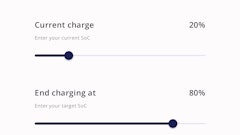
*This article brought to you in partnership with DAT Freight & Analytics*
Too often, shippers are left exposed to the risks of extreme weather conditions and the economic volatility that follows. The impact of these challenges on supply chains is profound, disrupting operations, escalating costs, and demanding a precise, strategic approach to ensure goods reach their destination intact and on time.
Think of a brutal snowstorm out west. Your carriers are stuck for who knows how long, and you’ve got to find a solution.
What if there was a way to not just mitigate these challenges but anticipate them?
Enter freight market data and analytics as the compass and map for navigating through these tumultuous conditions.
An increasingly volatile climate for shippers
A shipper’s goal is to deliver goods efficiently, but with an added layer of complexity — planning for the unpredictable, hopefully without escalating costs. Upward pressure on costs, including commodities, supplies, and freight, highlights the importance of proactive planning and flexibility. The most experienced and savvy shippers know they need to shift toward more insightful, data-driven decision-making to safeguard themselves against unpredictability.
Advanced analytics and technology that give unprecedented advantages
Amid these challenges, advanced analytics and technology emerge as crucial allies for supply chain management. Think back to our snowstorm and stuck carriers – with the right analytics tools you’ll get critical insights that optimize routes, minimize waste, and help point out when and where you can afford to pay more for weather-delayed lanes versus going to the spot market. For example, Benchmark Analytics helps you dive into your network performance to identify the top-performing carriers you can rely on, and surface underperforming carriers or lanes. With that information, it's simple to renegotiate or identify alternatives that can handle your unique business needs.
Let’s take it to the next level. Instead of just reacting in real-time, you can look ahead and plan for the unexpected. Predictive analytics empower shippers to plan proactively for key periods like produce season, leveraging historical data to preempt potential disruptions caused by extreme weather. Now, these delays aren’t detours, they’re just speed bumps.
Rate and network analytics software like DAT iQ offers a framework and guidance for building useful contingency plans. This might include exploring alternative lane options, conducting cost-benefit analysis of procuring equipment for short-term storage, getting access to non-contract truckload capacity, and ensuring budgets account for unexpected costs. With historical, real-time, and forecast data from tools like RateView and Ratecast, shippers have insight into where they stand relative to market rates and distilled looks at seasonal and geographic demand patterns. Their decisions are more accurate and confident when it comes to planning and procurement – even in a crisis.
But don’t forget the basics
At the heart of navigating supply chain disruptions is the strength of established partnerships. Collaboration between shippers, carriers, and technology providers paves the way for resilient supply chains strong and agile enough to mitigate weather-related disruptions. Building and reinforcing these partnerships helps overcome logistical challenges.
The power of freight market intelligence
Freight market intelligence tools, such as those offered by DAT iQ, empower shippers to make informed decisions amidst tight macroeconomic conditions. U.S. logistics costs, which eclipsed $2.3 trillion in 2022, account for a substantial portion of shippers' operational expenses. With supply chains being an enormous cost center, leveraging real-time data is non-negotiable. Tools like Benchmark Analytics from DAT iQ provide real-time insights, enabling procurement teams to forecast spend, analyze risk, and identify rate anomalies. In essence, freight market intelligence amplifies shipper supply chains with data-driven resilience, optimally positioning them in an unpredictable marketplace. Data-backed shippers improve inbound shipment scheduling and dock efficiency, critical pieces to the quality of produce in transit.
The path ahead for shippers may be fraught with economic and environmental uncertainties. Still, with the right technology and partnerships, navigating these challenges becomes not only feasible but a strategic advantage. By harnessing the power of freight market data and analytics, shippers can forecast, plan, and act with confidence, securing their position in the global marketplace no matter the weather.
Planning for unpredictability may seem like a paradox, but in today’s climate, it’s a necessity. Contact DAT to learn how their suite of freight market intelligence tools can help optimize your logistics strategies, ensuring your business remains resilient through all seasons.

























